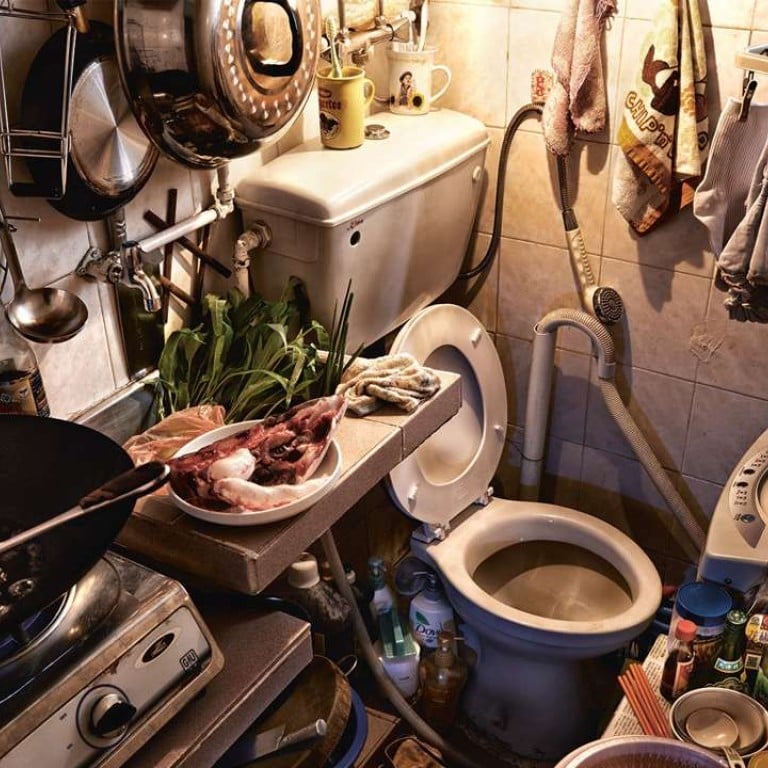
Coffin cubicles, caged homes and subdivisions … life inside Hong Kong’s grim low income housing
Behind the city’s glittery facade is a cramped and sometimes squalid underbelly where more than 200,000 people live day-by-day
Tony, 39, who quit school after his first year of secondary school and left home in his teens, has been living in subdivided flats for most of his life.
He lives in a 500 square foot apartment with 21 other residents. He spends his nights cooped up in a tiny space, which barely fits a single-sized mattress, trying to fall asleep while his neighbours squabble over whose turn it is to use the bathroom.
“I dread going home, but I still need a place to sleep,” Tony, who only gave his first name, said, fearing he would be kicked out.
“The most difficult thing about living here, is not being able to breathe in fresh air. It’s suffocating,” he added.
Tony’s entire living space is a 15 square foot enclosure stacked on top of others like cupboards, with only a metal air vent to let the apartment’s air conditioning seep through.
When asked about his hopes and dreams, Tony said with a shrug: “I just want to find a job. Live in public housing.”

With an average four-year wait for public housing and ever-increasing rents in the private sector, many residents who live below the poverty line are forced to tolerate such conditions.
Almost 200,000 people were living in some 88,000 subdivided units last year, according to the Census and Statistics Department. But these figures do not include those living illegally in industrial buildings, which SoCO estimates could be up to 10,000.
“Each [of the 200,000 people] represents a server in the restaurant that we frequent, the bus driver who takes us to work, or the security guard who welcomes us home after a long day’s work,” SoCO’s director Ho Hei-wah said.
“They are just like us. They too have a need for their own private and intimate space, which they can call home.”
Single mother Ye lives in a 100 square foot apartment in Kowloon, where over half of the city’s subdivided flats are concentrated. A photo of her home shows her kitchen and toilet crammed into a single space.

“I have to crouch down to take a shower so the kitchen stove and condiments don’t get wet,” Ye, who only gave her last name, said.
Her 10-year-old daughter who lives with relatives was shocked to see how her mother lived.
“I remember her saying, ‘Mum, why is this place so strange? Even the farm where we raise chickens back home is bigger than here’,” Ye said.
The rent for subdivided units has been rising over the years. In 2015, the median monthly rent was HK$4,200 for a partitioned flat – a jump of 10 per cent over two years, according to official statistics.
Ye spends more than half of what she earns in a month just to pay the bills.
“I can’t afford to move out [even if they keep increasing my rent]. It took me five years to get used to the place I’m living in now and where things are with my poor eyesight,” Ye said.
Now 46, Ye is blind in one eye and has just 10 per cent of vision remaining in the other. She was struck blind by her stepmother in mainland China at the age of 12.
Each [of the 200,000 people] represents a server in the restaurant that we frequent, the bus driver who takes us to work, or the security guard who welcomes us home after a long day’s work
“They didn’t favour girls back then in our hometown,” she said.
After leaving home, she eventually got married and moved to Hong Kong. But her eyesight has been a hindrance to finding stable work.
“I used to do odd jobs at a beauty salon like wash dishes and clean table tops. But I couldn’t work there anymore after I tripped over a customer,” Ye, who now works as a part-time carer for a disabled child, said.
Despite her circumstances, she remained surprisingly optimistic.
“But at least it’s already better than having to work on the farm under the sun and rain. I have a roof over my head ... I’m satisfied with where I am now.”
She added: “I have nothing to complain about, I’ll just take each day as it comes.”
SoCO’s exhibition runs from October 3 to 9 at the Hong Kong Cultural Centre in Tsim Sha Tsui.

